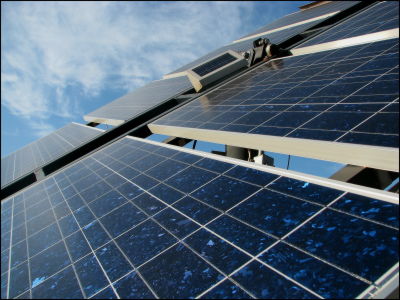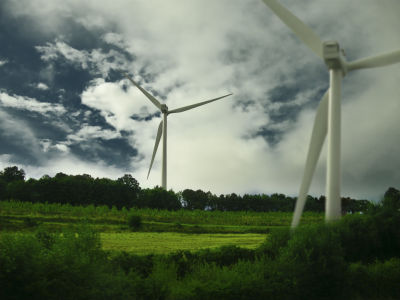Why do wind turbines have to be huge?

Wind power generation, which generates electricity by using the wind to turn a generator directly connected to a windmill, is expected to be a renewable energy source that does not emit carbon dioxide or methane gas, which cause climate change. However, the wind turbines used for wind power generation are extremely large, and it is said that one of the disadvantages of wind power generation is that the places where they can be installed are limited. YouTube channel
The Physics of Windmill Design - YouTube
Wind power generation was born at the end of the 19th century. The earliest windmills had a large number of blades and were about 20 meters in diameter. However, with the passage of time, windmills have become gigantic, and today the diameter of their blades can exceed 100 meters. Additionally, the number of feathers has been reduced to two or three, and the shape of the feathers themselves has changed to elongated ones.

There are physical reasons for the three evolutions of blades: ``increasing the overall size,'' ``reducing the number of blades,'' and ``increasing the angle of each blade.''

First of all, the reason why windmills grow so large is simply that the larger the diameter of the windmill, the more force is required to turn the windmill, which increases the electromotive force.

Since the wind is blocked by buildings and terrain near the ground, it is necessary to install wind turbines higher up in order to receive the wind efficiently.

In order to achieve more efficient wind power generation, wind turbines need to be taller and larger.

Furthermore, when talking about wind power generation, we cannot avoid the physical law known as ``

In order to approach the conversion efficiency of 59.3%, it is necessary to ``turn the wind turbine quickly while receiving as much wind as possible.'' In order to convert wind power into rotation while minimizing air resistance, there are two approaches: ``turning the windmill quickly with narrow blades'' or ``turning the windmill slowly with wide blades''.

A windmill converts linear wind energy into rotation, which means ``adding a twist to the air.'' A swirling air current is generated in the air behind the wind turbine, but if the wind turbine could obtain 100% of the energy from the wind, no air current would be generated. energy.

This means that the less swirling of the airflow that occurs behind the windmill, the better the conversion efficiency of the windmill.

In addition, the speed of the wind turbine also has a significant impact on energy conversion efficiency. For example, as shown in the figure below, when a ball is dropped on the slope of a moving triangular platform, the ball bounces and rolls to the left. And the faster the table moves, the shorter the distance the ball will roll to the left. This means that the faster the table moves, the more energy it absorbs from the falling ball.

Therefore, the faster the windmill blades rotate, the less rotational energy is lost. Theoretically, the rotational speed of a wind turbine should be at least five times the wind speed.

In addition, when the blades become wider and the number of blades increases, they become heavier, slowing down the rotation speed of the windmill, and increasing costs, so modern windmills have adopted a style of ``two to three thin, narrow blades.'' now.

For the above reasons, modern thinking is that in order to create more efficient windmills, we should adopt the approach of ``turning the windmill faster with three narrow blades.'' As a result, modern wind turbines are huge, with thin, narrow blades designed to rotate at high speeds.

Related Posts:







